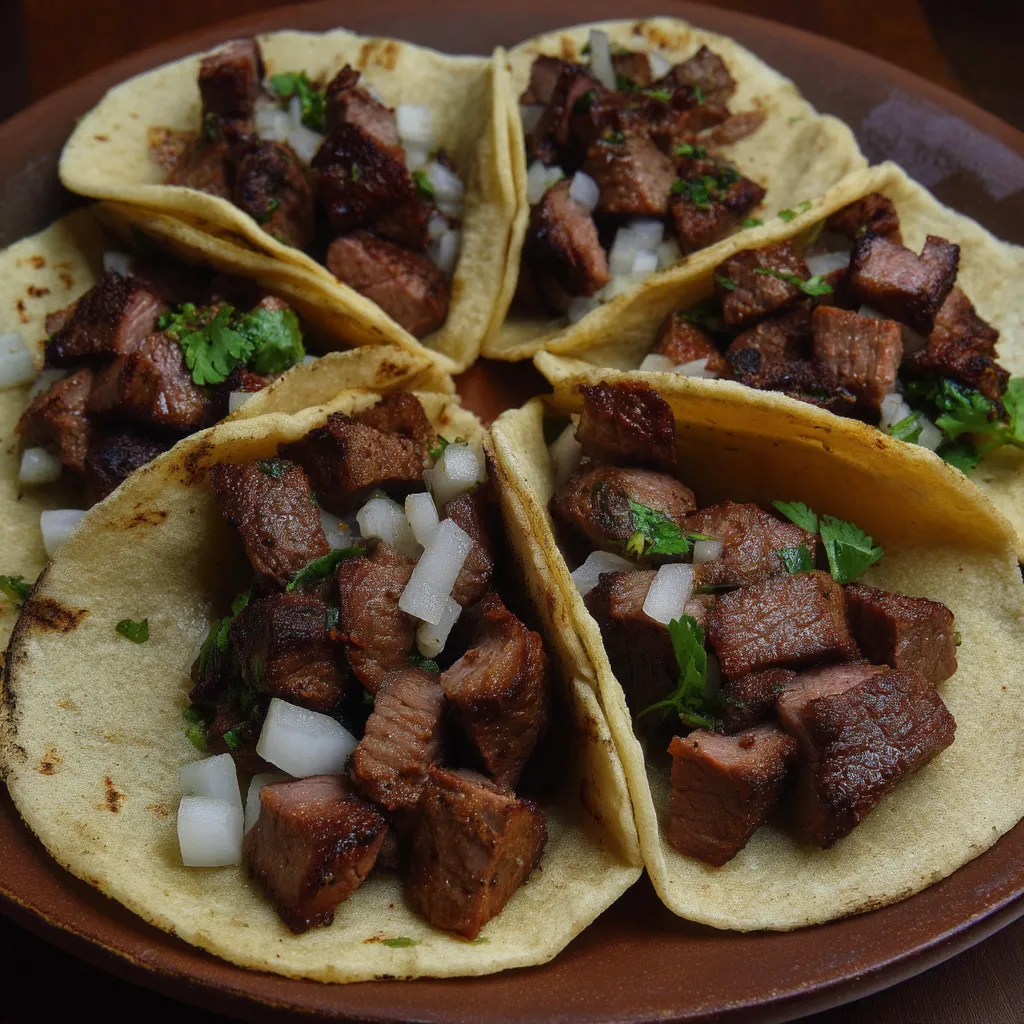 Save
Save
This authentic Mexican beef tongue recipe transforms an often-overlooked cut into flavorful, tender tacos that will surprise even skeptical eaters. The slow cooking process creates melt-in-your-mouth meat that pairs perfectly with vibrant salsa verde and fresh garnishes.
I discovered this recipe during my travels through central Mexico, where a local grandmother showed me how properly cooked tongue can outshine most conventional cuts of beef. My dinner guests are always shocked when I reveal what they've been devouring with such enthusiasm.
Ingredients
- Whole beef tongue 3-4 pounds provides the perfect texture and richness when properly cooked
- Fresh garlic and white onion these aromatics infuse the meat during the long simmer
- Dried herbs marjoram, thyme, oregano create a classic Mexican flavor profile
- Peppercorns and bay leaves essential for developing depth in the cooking broth
- Fresh cilantro and white onion bright, fresh garnishes that balance the rich meat
- Salsa verde the acidic, spicy counterpoint that cuts through the richness
- Corn tortillas look for authentic nixtamalized tortillas for the best texture and flavor
- Fresh lime the final touch of acidity that brightens every bite
Step-by-Step Instructions
- Preparing the Simmer
- Place the tongue pieces in a large pot with the halved garlic, onion, and all dried herbs and spices. Cover with water until the tongue is submerged by about two inches. This long, gentle simmer is where all the magic happens, transforming the tough cut into something tender and sublime.
- Slow Cooking Process
- Bring the pot to a rolling boil first, then immediately reduce to a gentle simmer. Cover with a tight-fitting lid and let cook for a full three hours. The gentle heat slowly breaks down the connective tissues. Check halfway through cooking and add hot water if needed to keep the tongue mostly covered.
- Cooling and Peeling
- Allow the tongue to cool slightly in the cooking liquid. This prevents it from drying out and makes the next step easier. Remove the tongue and while still warm, peel away the outer skin layer using a small sharp knife and your hands. This step is much easier when the tongue is still warm.
- Preparing for Tacos
- Slice the peeled tongue into thin slices about 1/4-inch thick, then dice into small cubes. This size is perfect for tacos, allowing each bite to have the perfect texture while absorbing the flavors of the salsa.
- Sautéing the Meat
- Heat oil in a skillet over medium-high heat and cook 1/4 cup of onion until softened. Add the diced tongue with salt and pepper to taste. Cook for 4-5 minutes until lightly browned. This final sear adds another dimension of flavor and improves the texture.
- Assembling the Tacos
- Heat corn tortillas on a hot comal or skillet until slightly browned on both sides. Keep warm in a kitchen towel. Place generous portions of the sautéed tongue in each tortilla, top with salsa verde, and garnish with fresh chopped onion and cilantro. A squeeze of lime adds the perfect finishing touch.
 Save
Save
My grandmother always insisted on simmering tongue with all the aromatics from the very beginning rather than adding them partway through. She claimed this was the secret to achieving that perfect melt-in-your-mouth texture that makes tongue tacos one of the most sought-after varieties at authentic taquerias.
The History Behind Lengua Tacos
Tacos de lengua have deep roots in Mexican cuisine, particularly in central Mexico where using the entire animal has been a tradition for generations. These tacos were born from necessity and ingenuity, transforming economical cuts into delicacies. Today, tongue tacos are considered a premium option at authentic taquerias throughout Mexico and the southwestern United States, prized for their rich flavor and buttery texture.
Selecting the Best Tongue
When buying beef tongue, look for one that appears fresh with a clean, pinkish color. The surface should be moist but not slimy. Smaller tongues from younger animals tend to be more tender. Ask your butcher to trim some of the base and cut it into pieces if possible, which will make the cooking process easier. If buying from a Latin market, you may find them already cleaned and prepared.
Make-Ahead Options
The beef tongue can be cooked up to three days ahead and stored in its cooking liquid in the refrigerator. This actually improves the flavor as it continues to absorb the aromatics. When ready to serve, simply remove from the liquid, peel, dice, and proceed with the sautéing step. The cooked and diced meat also freezes beautifully for up to three months, making this an excellent option for meal prep.
Serving Suggestions
For an authentic Mexican taco spread, serve these lengua tacos alongside other varieties like carnitas, al pastor, or carne asada. Accompany with small bowls of diced white onion, chopped cilantro, sliced radishes, and lime wedges so guests can customize their tacos. Traditional sides include Mexican rice, refried beans, and grilled cebollitas. For beverages, cold Mexican beer, horchata, or agua fresca complement these tacos perfectly.
 Save
Save
Recipe Q&A
- → How do I know when the beef tongue is fully cooked?
The beef tongue is fully cooked when it's completely tender and soft. After simmering for about 3 hours, you should be able to easily pierce it with a fork. The outer skin should also separate from the meat without much resistance when peeling.
- → Can I prepare the beef tongue in advance?
Yes, beef tongue can be prepared 1-2 days in advance. After cooking, cool it completely in its cooking liquid, then refrigerate. When ready to use, reheat in the liquid until warm enough to peel, then proceed with dicing and finishing the dish.
- → What can I substitute for salsa verde?
If you don't have salsa verde, you can substitute with pico de gallo, chipotle salsa, or even a simple combination of chopped tomatoes, onions, cilantro, jalapeños and lime juice. Each alternative will provide a different flavor profile but will work well with the beef tongue.
- → Why is it important to peel the tongue while it's still warm?
Peeling the tongue while it's still warm is recommended because the outer skin separates more easily from the meat at this temperature. As the tongue cools, the skin tends to adhere more firmly, making the peeling process more difficult and potentially causing loss of good meat.
- → How can I store leftover cooked beef tongue?
Store leftover cooked beef tongue in an airtight container in the refrigerator for up to 3-4 days. You can either store it whole (if not yet peeled) or diced. Reheat thoroughly before serving. The meat can also be frozen for up to 3 months for longer storage.
- → What sides pair well with beef tongue tacos?
Traditional accompaniments include Mexican rice, refried beans, guacamole, and pickled vegetables like jalapeños or carrots. A simple cabbage slaw with lime dressing also provides a refreshing contrast to the rich meat. For beverages, horchata or a cold Mexican beer complement these tacos perfectly.
